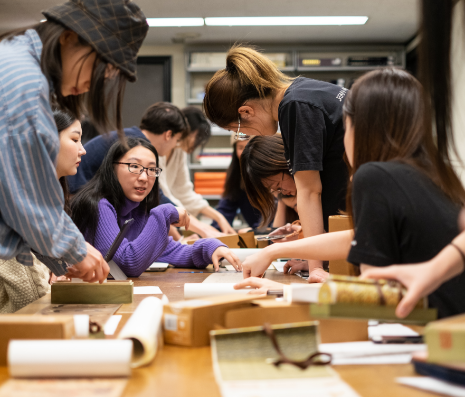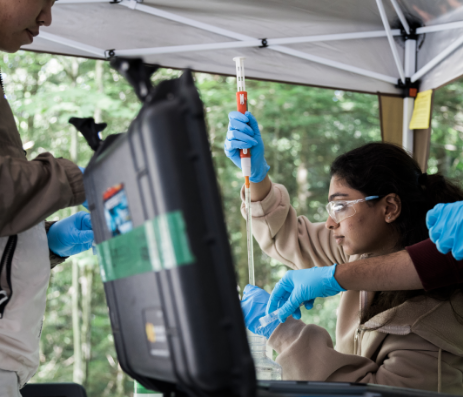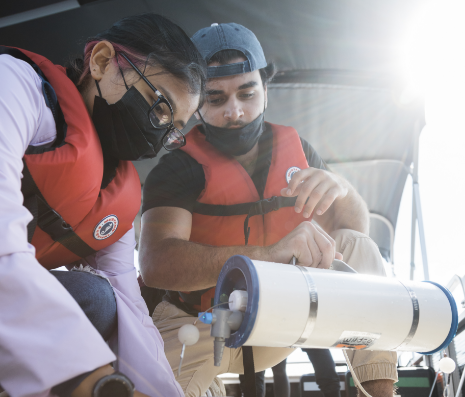“Research permeates every aspect of teaching and undergraduate student learning at U of T.”
Susan McCahan
Vice-Provost, Innovations in Undergraduate Education
Identifying an Area of Research
Getting involved with research can be exciting, but you may not know where to start! Part of your undergraduate student research journey is about discovery: what area are you excited to learn more about?
You are not expected to have all the answers, and having more questions is a part of your journey. A helpful first step can be to narrow your search for research opportunities. Below are some strategies to help you identify an area of research you might wish to further pursue.
As you review these strategies, don’t be afraid to cross disciplinary boundaries. While you might see disciplinary fields as separate from one another (e.g., only someone majoring in history, can support historical research), an interdisciplinary approach brings in other angles, methods and perspectives. There are many benefits to taking an interdisciplinary approach to research:
- Taking an interdisciplinary approach fosters creativity, encourages you to explore innovative ideas and solutions, and encourages you to leverage and integrate knowledge from multiple fields.
- You may discover a new area of interest (and could even pursue a research opportunity outside of your field of study!).
- You may engage with a broader research network and be better equipped to work in environments that require you to collaborate with colleagues who have varied disciplinary backgrounds.
Talk
Talk with peers, mentors and upper-year students about your research curiosities.
During office hours, you might introduce yourself to you instructor or TA and discuss your research interests as it specifically relates to course materials.
Often an underutilized resource, your teaching assistants (TAs) can share unique insights into the research process and how you might get involved in research. Remember, teaching assistants were in your position not too long ago and can share their personal experiences about how they navigated this process.
Join
Join undergraduate student unions, clubs and societies to learn about research activities.
Get involved with undergraduate research journals, and learn more about the writing and peer-review process.
Attend undergraduate poster forums and conferences to learn about the research of your colleagues.
You might also check if your academic unit offers conferences, workshops or talks related to undergraduate research. These events are excellent opportunities to learn more about research as well as connect with your peers, graduate students and faculty.
Explore
Review the Undergraduate Research Types and filter based on your priorities (e.g., curricular, co-curricular).
Interested in a topic that came up in class? Start reading! Consider if you’re intrigued to learn more, and if there is a possibility to pursue research on the topic and how.
Explore the work of the faculty member you are interested in working with by reviewing their profile on Discover Research. Learn more below about how you might approach this research.
Reflect
What topics in your field / courses spark your curiosity?
What complex issues in the world are you curious or passionate about?
What topics could support your career exploration?
What are you most interested in achieving through a research opportunity?
Do you want to work as part of a larger research team or more one-on-one?
What skills and experience do you already have that would support you in a research role?




Connecting with Faculty
If you decide to take the step of reaching out directly to faculty members, take a few moments to reflect: Why are you reaching out to that specific faculty member about their research? What is it about a faculty member’s specific research that prompted you to reach out? How does it align with your research interests and experiences?
Below you will find a guide to help you navigate the process of reaching out to faculty to discuss research. From the guide, you’ll note that it takes effort to craft an impactful email. You’re more likely to receive a response by focusing your efforts on select faculty members whose work you are interested in and sending them a message specifically about their research, why it interests you and inquiring about research opportunities.
1. Purpose
Before reaching out to faculty, it’s important to reflect on your desired outcome. If your goal is to attain a research position, you might consider if there are other ways you could find this information. For instance, if a faculty member has a paid research role available, they most likely will post the details of the position on CLNx, their academic unit’s website or on Discover Research.
2. Locate
Check if the faculty member you’re interested in working with has a profile on Discover Research; these profiles share faculty research and teaching interests as well as scholarly publications.
3. Research
Take time to review faculty profiles on Discover Research and perhaps also a few of their relevant publications. In learning more about a faculty member’s research, you will better understand how (or if) their research interests intersect with your own.
4. Reach Out
If you decide to reach out to the faculty member, keep your email formal and concise.
Learn more here about key considerations when writing to a faculty member.
5. Next Steps
Remember you might not hear back right away from the faculty member you reach out to especially during the busyness of the term. After two weeks, you might send a short follow-up email with your original email. If you do not receive a response, it might be time to turn to other opportunities.